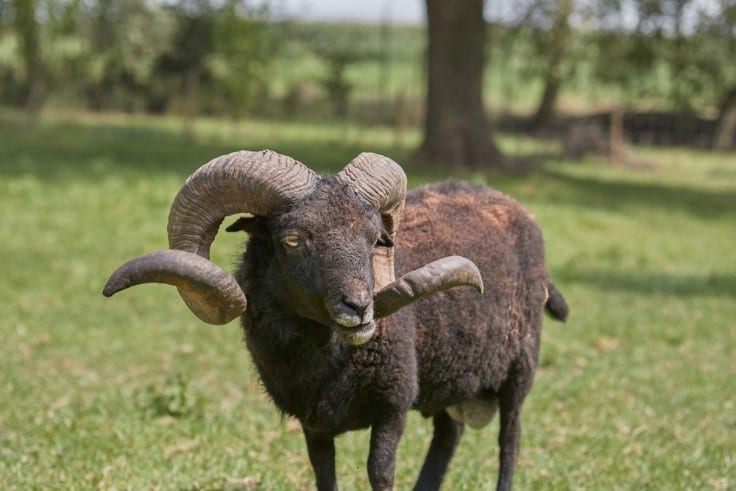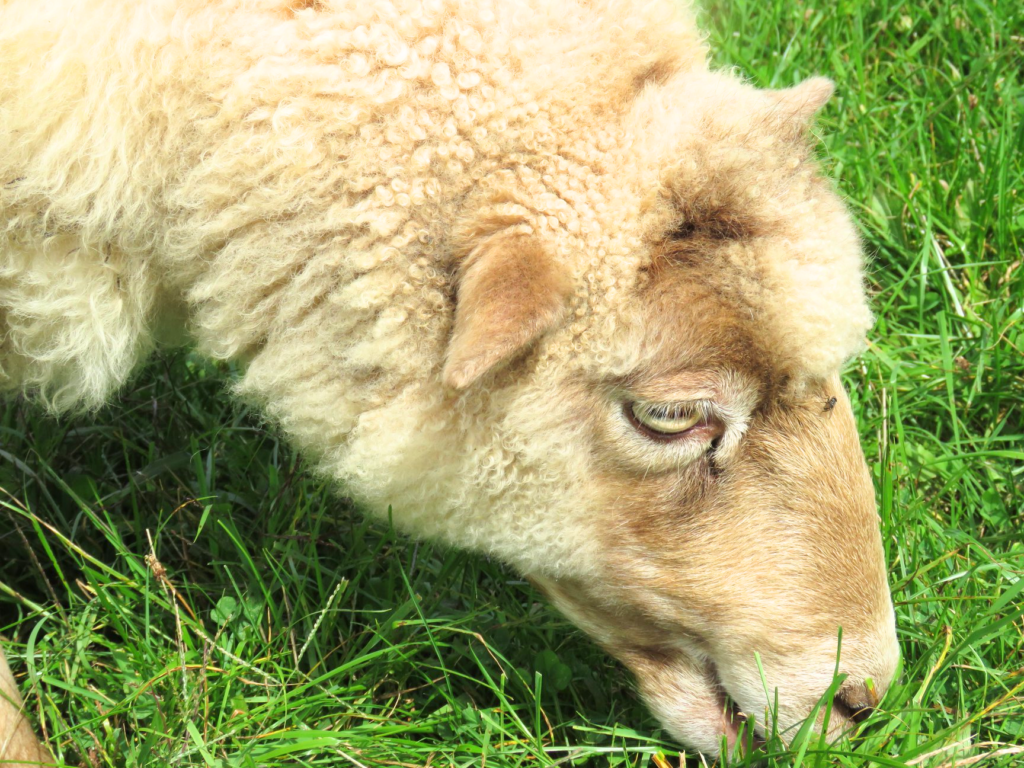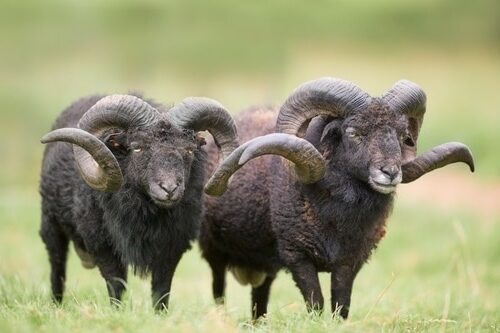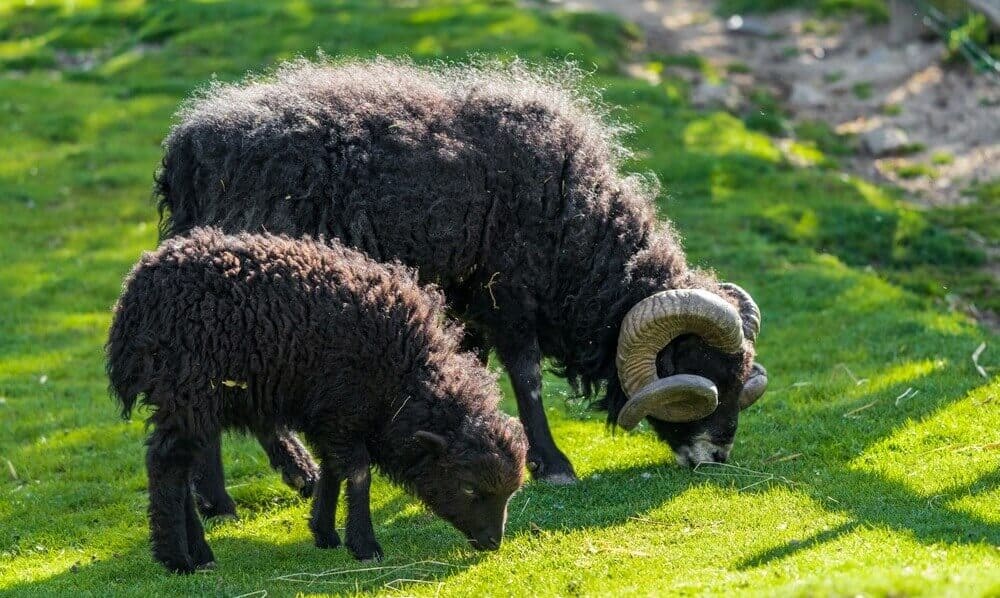Ouessant sheep, known by many other names, including Ushant, Mouton d’Ouessant, and Breton Island Dwarf, is a dwarf sheep breed originating from the Ile d’Ouessant, which is a small island just off the coast of Brittany, France.
The Ouessant sheep are believed to be one of the smallest sheep breeds in the world. They were only found on the island of Ouessant until the early 20th century. This breed of sheep is now found almost everywhere in New Zealand, Great Britain, and other parts of Europe, such as Germany, and on a few farms in California and Massachusetts in the US.
Ouessant Sheep
This breed of sheep is highly-adaptable and mostly bred for its wool production, which is perfect for fine knitting yarns and soft woven yarns. If you are in the market for a small breed of sheep that are excellent at producing wool, you might want to try the Ouessant breed. Let’s take a quick look at some of its characteristics and why breeders like keeping these sheep.
Ouessant Sheep Origin and History
Originating from the Island of Ouessant in Brittany, France, the Ouessant sheep breed is a rare breed that almost went extinct at some point. It’s believed that this sheep breed is closely related to the Northern short-tailed breed.
At first, there were two original lines on the island: the Morbihan and the Vendeen. These two lines eventually became the single line of Ouessant sheep we know now. At some point in the mid-1900s, this breed almost went extinct and was only saved by a few aristocrats who allowed the few remaining sheep to graze and breed on the land surrounding their chateaux.
According to the Ouessant Sheep Society, the Ouessant sheep breed is believed to be one of the smallest sheep breeds. The size of the Ouessant sheep has been attributed to the lack of adequate grazing on the island. This led to the selective breeding of a particularly small sheep breed.
Appearance and Characteristics of the Ouessant Sheep
The first thing most people will notice about the Ouessant sheep is their small size. These miniature sheep are by far some of the smallest domestic sheep in the world. A mature Ouessant ewe averages about 18 inches in height at the shoulder and the mature rams at 19 inches at the shoulder. They generally weigh less than 45 pounds.
These animals are a dark brown, black, or white, including variations of these colors. They grow a dense undercoat with thick fleece of long wool.
Their fleece is considered high-quality and desirable because it’s versatile to use for felting, weaving, and hand spinning.

Ouessant rams have relatively large, outward turning horns curled in a single spiral. Ouessant ewes are naturally polled (hornless). Black and brown Ouessant rams grow dark horns while the white rams grow lighter-colored horns. Their tails are short and are not docked.
This sheep breed is characteristically strong and very hardy. They tend to stay together as a flock to protect themselves from predators. They are extremely sensitive to threats and can sense danger hundreds of feet away.
The Ouessant sheep is commendable for wool production. Their wool covers their entire bodies and mostly extends to their faces, including the cheeks and forehead. Sometimes, it may even cover their legs.
Reproduction
Ouessant sheep are not exactly known as prolific breeders, and the ewes hardly ever have twins. However, they reproduce quite well, and the ewes have commendable mothering instincts. Couple that with the fact that the flock tends to herd together to protect themselves from predators, and you find that Ouessant lambs have a good survival rate.
Regarding their estrous cycles, Ouessant ewes aren’t that much different from most other sheep breeds’ ewes. They tend to come into heat on average every 15 to 20 days, while their breeding cycles last for around 24 to 36 hours.
Ouessant sheep have a gestation period of between 149 days and around 155. For the most part, the ewes will have a lactation period of around 240 days. While they aren’t prolific milk producers, Ouessant ewes can be milked for about 180 days to nourish their lambs.

Why Raise Ouessant Sheep?
There are several good reasons many breeders across the globe choose to raise Ouessant sheep today. Overall, this small sheep is not only adapted to meager pasture but is also capable of producing a good amount of high-quality wool.
- Wool production: This is the primary reason most breeders choose to keep Ouessant sheep. While this is a relatively tiny sheep, the fleece production might not be extraordinary, but it is extremely high quality. The fleece on an Ouessant sheep is quite thick, with the white fleece having a slightly reddish undertone.
- Meat production: While they aren’t very big, the Ouessant sheep do well as dual-purpose sheep that produce wool and meat. Their meat is tender and somewhat lean.
- Pet or hobby: They are so small that some breeders tend to keep them as pets or for hobby farming. This is because they tend to be easy to handle, are friendly, and require very little space. A small flock of these animals is a great addition to any farm with children.
- Good at tending landscape: Many sheep farmers benefit from their landscape-keeping ability on small farms, vineyards, etc.
Fleece
They produce fleece of primitive type, semi-closed, and well-packed, a staple of 8-10cms for 12 months growth. Average thickness 25-28 microns. You may find the ram develop a mane of longer coarser hair on nape of their necks and throats which may be darker. Their fibers are highly-prized.

FAQs
Are Ouessant sheep easy to care for?
Because of their small size, Ouessant sheep are quite easy to handle, which makes them somewhat easier to care for and feed. You will need to shear them yearly. While some may want to take on learning how to shear a sheep, in the beginning, it may be wise to hire a professional, especially because of the rams’ horns.
What kind of temperament do Ouessant sheep have?
Ouessant sheep are generally very friendly sheep with a docile and even-keeled temperament. They are, however, prey animals, and owing to their small size; they are often very weary of their surroundings and, as such, tend to get very skittish from time to time.
Should I keep Ouessant sheep?
Yes, if you are looking for a sheep breed that is not only small but also gentle, adorable, friendly, and easy to care for, then you should definitely consider keeping Ouessant sheep. They produce desirable wool and meat.
Facts About Ouessant Sheep
The small size of the Ouessant sheep makes them adorable and easy to handle. They are especially hardy and can adapt to various climates, even when the grazing opportunities are not fitting for other sheep breeds. A breed that is also hardy and produces excellent wool and meat are Icelandic sheep.
If you are in the market for a smaller sheep breed that works well as a wool or meat producer and handles lambing quite effortlessly, the Ouessant sheep might be the right sheep breed for you. Another smaller sheep breed, though larger than Ouessants, are Shetlands.
Learn how many sheep per acre you can keep as well the the difference between raising lamb vs sheep.
These small sheep can be a good fit for beginners, either new to raising livestock or to raising sheep.
Check out these fun sheep names!

